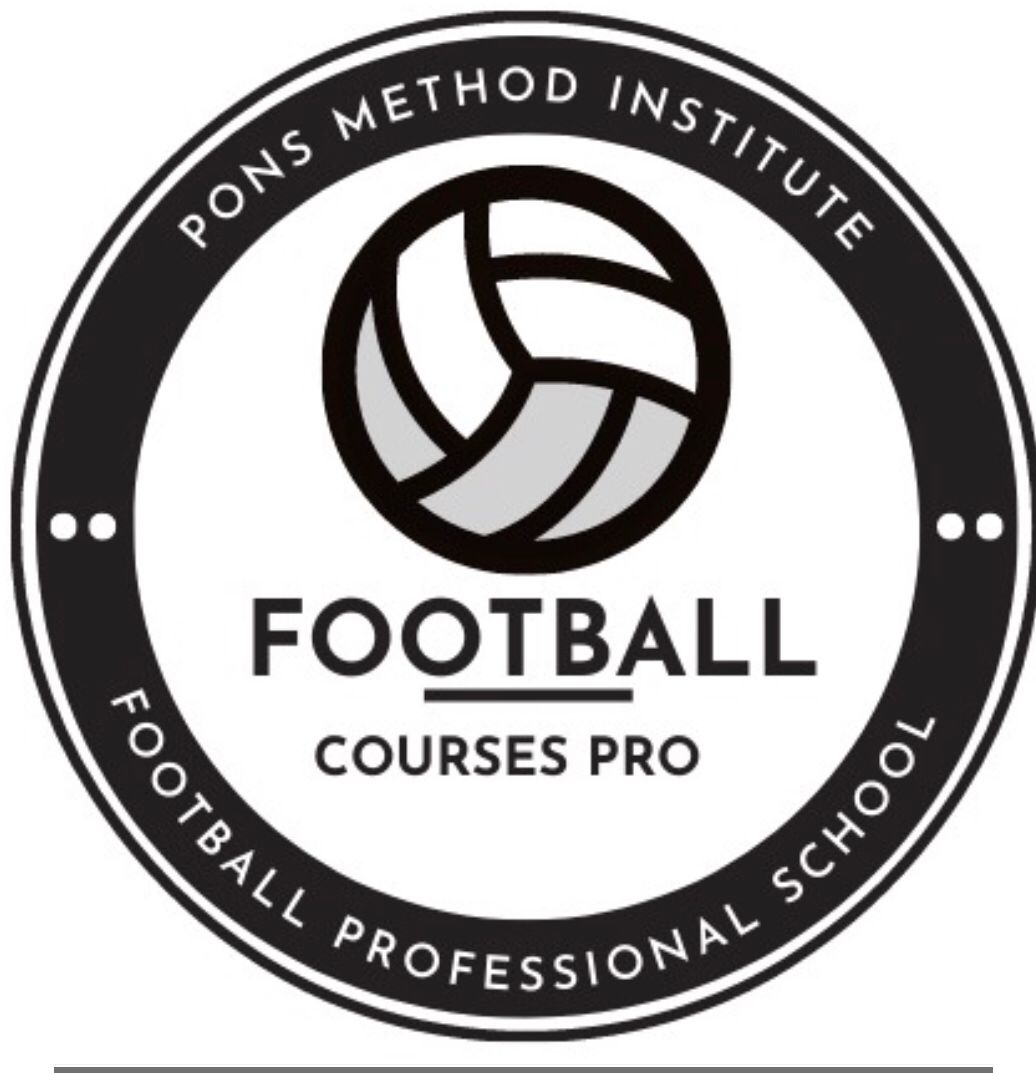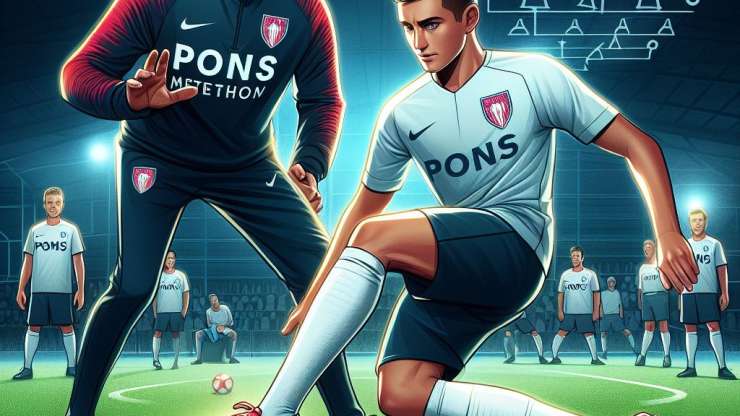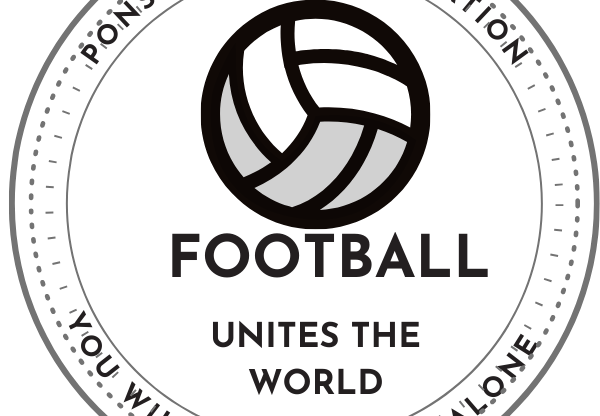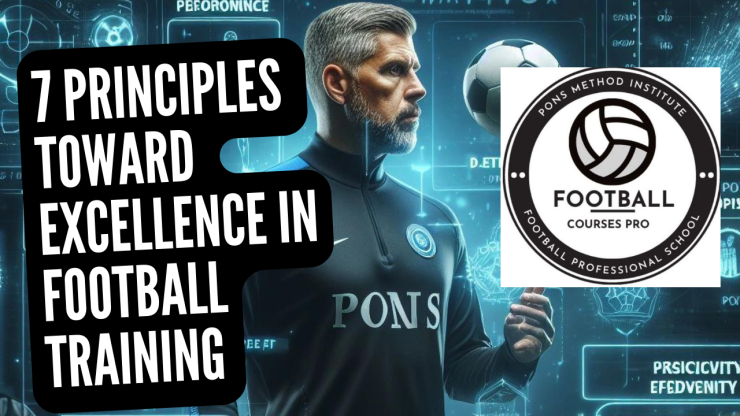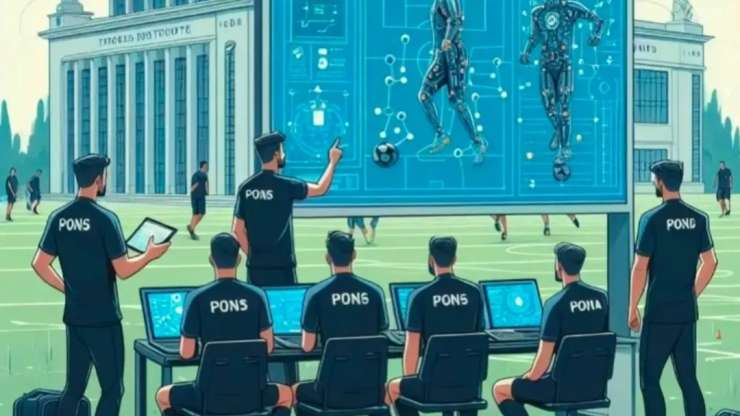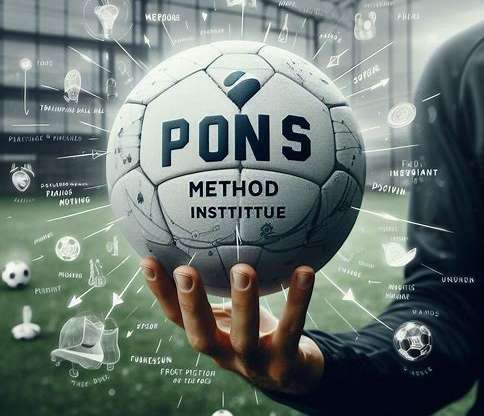While specific success stories of teams using the Pons Method are not widely publicized, the methodology itself has been praised for its innovative approach to football training. The Pons Method is known for bringing over 30 improvements to modern football training, including better weekly training plans, individual development of players, and improved understanding between different positions
The method’s focus on specificity in training, creative thinking, and communication, as well as its positive impact on the financial and marketing departments of football clubs, suggests that teams implementing this approach could see significant benefits1. These improvements aim to optimize training time, enhance physical qualities, and improve the overall training methodology, which can contribute to a team’s success on the field
For detailed examples of teams that have successfully implemented the Pons Method, it would be best to look at case studies or testimonials from coaches and clubs that have adopted this methodology. Such information might be available through coaching networks, football training seminars, or publications dedicated to sports innovation and training techniques
Yes, the Pons Method is closely associated with its creator, David Pons. He is a coach who represents a new era in football, advocating for a complete tool that covers everything from planning to execution of training, benefiting players, coaching staff, and the organization as a whole1. His holistic approach and adaptability make him a valuable resource for the future of football
David Pons has been instrumental in developing and promoting the Pons Method, which is gaining recognition for its innovative approach to football training and methodology
Coaches who are interested in this method can learn from his expertise and insights into the game.
David Pons is a professional football coach with a rich background in coaching and a passion for developing innovative training methodologies. Here’s an overview of his coaching career:
• David Pons Carbonero: Born on November 4, 1972, in Barcelona, Spain1.
• Coaching License: He holds a UEFA Pro Licence, which is the highest coaching certification in European football1.
• International Experience: Pons has coached internationally, which has contributed to his broad perspective on football training and methodology2.
• Managerial Positions: He has managed several clubs, including Nongbua Pitchaya FC, Al-Ahli SC, Al-Shabab, Platges Calvià, La Salle U19, and CD Genova1.
• Innovative Approach: Pons is known for creating the Pons Method, a modern and innovative football training tool that aims to bring tangible improvements to football training structures2.
His website, www.davidponscoach.com, provides more information about his coaching philosophy and the Pons Method1. Additionally, David Pons shares insights into his international coaching experience and his innovative football method through various platforms, including interviews and social media23.
The Pons Method has had a significant impact on David Pons’ coaching career. It has positioned him as an innovator in football training, allowing him to contribute to the evolution of coaching staff and methodologies. Here are some ways the Pons Method has influenced his career:
• Innovation in Coaching: The Pons Method has established David Pons as a forward-thinking coach who is contributing to the future of football coaching. His approach emphasizes specificity, individualization, and tactical rigor1.
• Educational Contributions: He has been able to share his knowledge through various platforms, including podcasts, social media, and his website. This has allowed him to reach a wider audience and influence other coaching professionals1.
• Leadership and Entrepreneurship: The method has enhanced his reputation as a leader and entrepreneur in the football world, showcasing his ability to create and implement a modern and innovative methodology2.
• International Recognition: With the Pons Method, David Pons has gained international recognition, which has likely opened up opportunities for him to work with various teams and organizations around the world2.
Overall, the Pons Method has been a cornerstone of David Pons’ coaching philosophy, enabling him to make a meaningful contribution to the sport and solidify his status as a respected figure in football coaching12.
Promoting a new methodology like the Pons Method in the well-established and tradition-rich world of football coaching can come with its set of challenges. While specific details about the challenges David Pons faced are not readily available, we can infer some common obstacles based on the nature of introducing innovative approaches in sports:
• Acceptance in the Coaching Community: Convincing the coaching community to adopt a new method that deviates from traditional training practices can be difficult. Coaches may be hesitant to change proven methods for something untested at scale.
• Evidence of Efficacy: Providing substantial evidence that the Pons Method works better than existing methodologies could be a challenge, especially without a long track record of success at the highest levels.
• Resource Allocation: Implementing the Pons Method requires investment in terms of time, personnel, and possibly equipment, which clubs and organizations may be reluctant to provide without guaranteed results.
• Cultural and Language Barriers: As football is a global sport, introducing a methodology across different cultures and languages can present significant challenges in terms of communication and adaptation.
• Education and Training: Educating coaches and players about the intricacies of the Pons Method and training them to implement it effectively can be a time-consuming process.
David Pons has been proactive in promoting his method through various channels, including conferences, social media, and online platforms, to overcome these challenges12. His dedication to sharing his knowledge and the potential benefits of the Pons Method is likely to continue to pave the way for its wider acceptance in the football community.
The football community’s response to the Pons Method has been positive, particularly for its innovative approach to training architecture. The method is recognized for bringing more than 30 improvements to modern football training. It addresses the need for a new modern training architecture based on fragmentation with tactical panels, through modeled processes, and Football Process Management (FPM). This allows for maximizing time and resources, providing a more efficient and tailored training experience1.
The Pons Method’s emphasis on individual player development within the team’s framework has been well-received as it aligns with the contemporary focus on personalized coaching and player management. Its innovative use of tactical panels and process modeling is seen as a step forward in football training methodologies1.
Overall, the method seems to be gaining traction and interest within the coaching community, as it offers a fresh perspective on how to approach the game’s tactical and physical demands in a more structured and efficient manner1.
The search didn’t return specific information about professional clubs that have fully embraced the Pons Method. However, given the method’s innovative approach to football training, it’s possible that clubs, especially those looking to modernize their training practices and focus on individual player development, might be interested in or already experimenting with this methodology.
For concrete examples, one would need to look at case studies or direct communications from clubs that have adopted the Pons Method. Coaches and clubs often share their success stories and methodologies through interviews, conferences, and publications within the football community. It’s also possible that David Pons himself could provide information on professional clubs that have implemented his method through his various platforms or coaching networks12.
The search didn’t return specific information about professional clubs that have fully embraced the Pons Method. However, given the method’s innovative approach to football training, it’s possible that clubs, especially those looking to modernize their training practices and focus on individual player development, might be interested in or already experimenting with this methodology.
For concrete examples, one would need to look at case studies or direct communications from clubs that have adopted the Pons Method. Coaches and clubs often share their success stories and methodologies through interviews, conferences, and publications within the football community. It’s also possible that David Pons himself could provide information on professional clubs that have implemented his method through his various platforms or coaching networks12.
Coaches can communicate the benefits of adopting the Pons Method to club management and players by using the following strategies:
• Educational Workshops: Organize workshops for both management and players to educate them about the Pons Method’s principles, benefits, and success stories. This can help stakeholders understand the value and potential impact of the methodology.
• Data-Driven Presentations: Use data and case studies to show the effectiveness of the Pons Method in improving player performance and team results. Highlighting tangible improvements can make a compelling case for adoption.
• Demonstrations: Conduct practical demonstrations of training sessions using the Pons Method to showcase its application and effectiveness in real-time.
• Player Involvement: Involve players in the decision-making process by seeking their feedback on trial sessions and incorporating their input into the final training approach.
• Clear Communication: Clearly articulate the goals and expected outcomes of adopting the Pons Method, ensuring that both management and players understand the long-term vision.
• Success Metrics: Define clear metrics for success that align with the club’s objectives, such as player development milestones or team performance indicators.
• Testimonials: Share testimonials from other coaches, players, or clubs that have successfully implemented the Pons Method to build credibility and trust.
• Continuous Support: Offer ongoing support and resources to ensure a smooth transition to the new methodology, addressing any concerns or challenges that arise.
By effectively communicating the benefits and providing evidence of the method’s success, coaches can build a strong case for the Pons Method and encourage its adoption within their clubs.
When introducing a new training method like the Pons Method, management and players might have several potential objections or reservations:
• Resistance to Change: Both management and players may be comfortable with the current methodologies and may view new methods with skepticism or as unnecessary changes1.
• Proven Effectiveness: There may be concerns about the lack of proven effectiveness or a track record of success, especially at the highest levels of competition1.
• Resource Allocation: Implementing a new method often requires additional resources, such as time for education and training, which might be seen as a strain on existing commitments1.
• Complexity and Understanding: The Pons Method’s innovative approach may initially seem complex, and players and management might worry about the time it takes to understand and apply it effectively1.
• Cultural Fit: The method may not align with the club’s culture or philosophy, leading to concerns about its suitability and integration within the existing framework1.
• Player Buy-In: Players might be hesitant to adopt new training techniques, fearing it could disrupt their routine or not improve their performance as promised1.
• Short-Term Disruption: Introducing a new method can disrupt the current training regime, which might be a concern during the competitive season1.
• Long-Term Commitment: There might be doubts about whether the club is willing to commit to the long-term process of integrating and mastering a new method1.
Addressing these objections requires clear communication, demonstrations of the method’s benefits, and evidence of its effectiveness. It’s also important to involve all stakeholders in the process to ensure a smooth transition and buy-in from everyone involved1.
The “Pons Method” refers to an innovative football methodology that aims to create a new architecture in soccer training. It emphasizes much more specific joint work through training fragmentation, which allows for a more tailored approach to developing players’ skills and team strategies1.
The essence of the Pons Method is to adapt training to the modern demands of football, focusing on the individual needs of players while also ensuring that the team as a whole benefits from these specialized training sessions2. This method is considered to be at the forefront of football coaching and training techniques, offering a fresh perspective on how to approach the game’s tactical and physical demands.
If you’re interested in learning more about the Pons Method, there are resources available, including educational videos and detailed explanations of the methodology, which can provide a deeper understanding of how it can improve a football team’s performance34.
Coaches can create a supportive environment to address concerns about adopting the Pons Method by implementing the following strategies:
• Open Communication: Foster an environment where open and honest communication is encouraged. Allow management and players to express their concerns and questions about the new method.
• Inclusive Decision-Making: Involve all stakeholders in the decision-making process. This includes discussing the potential adoption of the Pons Method with players and management, and considering their feedback seriously.
• Education and Training: Provide comprehensive education and training sessions to ensure everyone understands the Pons Method and its benefits. This can include workshops, seminars, and hands-on training.
• Evidence-Based Approach: Present data, research, and case studies that demonstrate the effectiveness of the Pons Method. Showing evidence can help alleviate concerns about its efficacy.
• Pilot Programs: Start with pilot programs to allow the team to experience the benefits of the method firsthand without fully committing to it. This can serve as a proof of concept.
• Gradual Implementation: Introduce the method gradually to avoid overwhelming players and staff. Start with integrating certain aspects of the method into the existing training regime.
• Personalized Support: Offer personalized support to players and staff as they adapt to the new method. This can include one-on-one meetings, feedback sessions, and additional resources.
• Success Stories: Share success stories and testimonials from other teams and coaches who have successfully implemented the Pons Method. This can help build confidence in the method.
• Positive Reinforcement: Use positive reinforcement to encourage players and staff as they make progress with the new method. Celebrate small victories and improvements.
• Continuous Evaluation: Regularly evaluate the implementation process and make adjustments as needed. This shows a commitment to finding the best fit for the team.
By creating a supportive environment that addresses concerns through education, evidence, and engagement, coaches can facilitate a smoother transition to the Pons Method and ensure that all stakeholders are on board with the new approach.
Handling resistance from senior players or team leaders is a common challenge in coaching, especially when introducing new methodologies like the Pons Method. Here are some strategies coaches can use:
• Engage in Dialogue: Open a line of communication with the resistant players. Listen to their concerns and provide clear, evidence-based explanations for the changes.
• Leverage Their Influence: Involve senior players in the planning and implementation process. Their buy-in can influence the rest of the team positively.
• Show Respect for Experience: Acknowledge the experience and past contributions of senior players. Show them how the new method can complement their skills and extend their careers.
• Individual Meetings: Have one-on-one meetings to address personal concerns and discuss how the new method can benefit them specifically.
• Demonstrate Success: Use examples of other teams or players who have improved after adopting the Pons Method. Success stories can be persuasive.
• Gradual Implementation: Introduce the method gradually, allowing senior players to adjust to the changes over time rather than all at once.
• Education and Training: Provide additional education sessions to ensure they fully understand the method and its benefits.
• Empowerment: Give them roles within the new system that empower them and utilize their leadership qualities.
• Positive Reinforcement: Recognize and reward adaptation and effort in learning and applying the new method.
• Patience and Persistence: Understand that change takes time and be patient but persistent in implementing the new method.
By using these strategies, coaches can address the concerns of senior players and team leaders, helping to smooth the transition to the Pons Method and ensuring that the whole team moves forward together.
